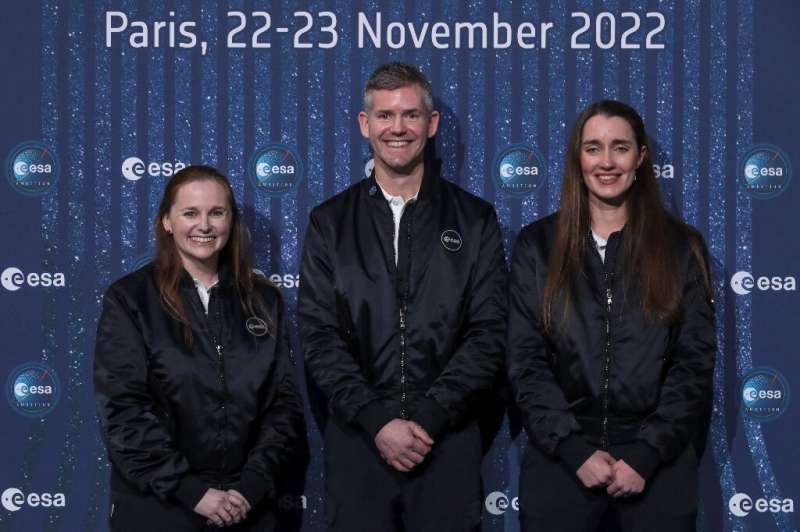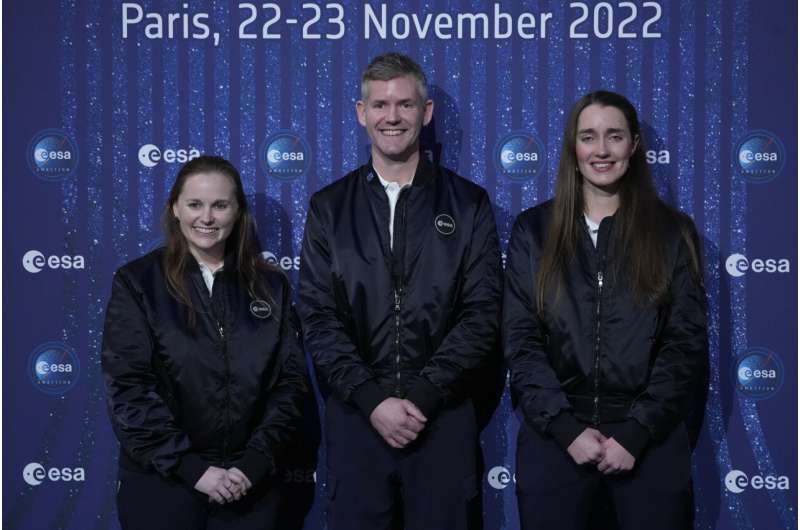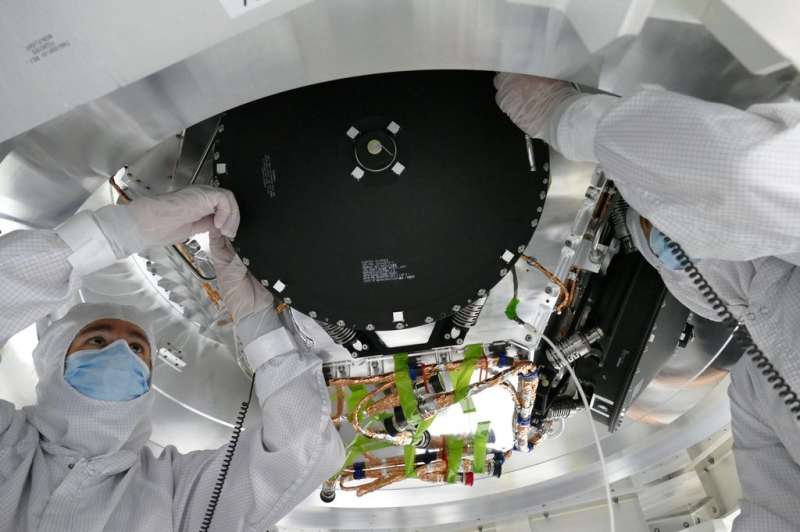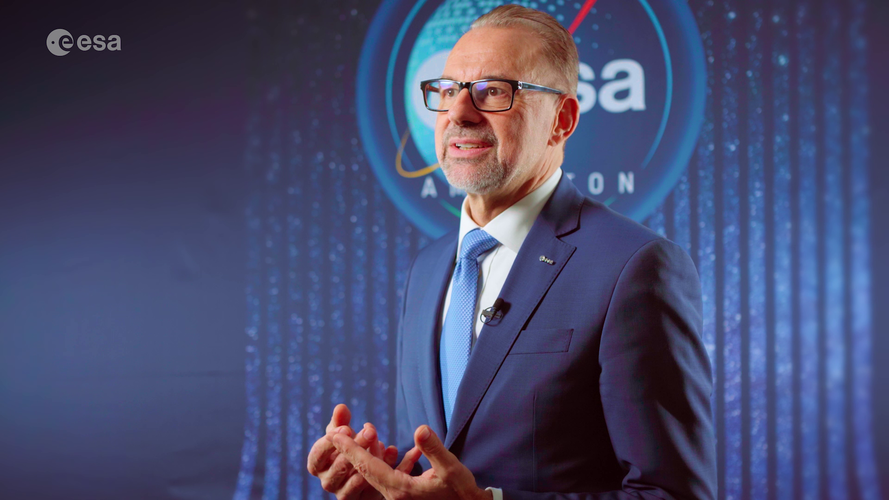
Copernical Team
A picture is worth a thousand words
 From the image Perseverance recently took at Yori Pass, we can see that there are gray rocks scattered on top of a tan colored rock surface below. What do these different colors tell us? As planetary geologists, our job is to figure out through physical and chemical observations the story that these rocks tell us about Yori Pass and its place within the delta in Jezero Crater. Color is one of th
From the image Perseverance recently took at Yori Pass, we can see that there are gray rocks scattered on top of a tan colored rock surface below. What do these different colors tell us? As planetary geologists, our job is to figure out through physical and chemical observations the story that these rocks tell us about Yori Pass and its place within the delta in Jezero Crater. Color is one of th European Service Module powering Orion to the Moon and back
 The European Service Module is powering Orion around the Moon and back, providing propulsion, temperature control, electricity as well as storage and delivery for essential supplies such as fuel, water and air. This first Artemis mission is an uncrewed test mission, putting the spacecraft through its paces preparing to send astronauts forward to the Moon.
After liftoff at 07:47 CET (06:47
The European Service Module is powering Orion around the Moon and back, providing propulsion, temperature control, electricity as well as storage and delivery for essential supplies such as fuel, water and air. This first Artemis mission is an uncrewed test mission, putting the spacecraft through its paces preparing to send astronauts forward to the Moon.
After liftoff at 07:47 CET (06:47 NASA selects Rocket Lab to launch TROPICS Mission
 Rocket Lab USA, Inc. (Nasdaq: RKLB) has been selected by NASA to launch the Time-Resolved Observations of Precipitation Structure and Storm Intensity with a Constellation of Smallsats (TROPICS) mission, as part of the agency's Venture-class Acquisition of Dedicated and Rideshare (VADR) launch services contract.
Rocket Lab will launch the TROPICS mission, which is part of NASA's Earth Syste
Rocket Lab USA, Inc. (Nasdaq: RKLB) has been selected by NASA to launch the Time-Resolved Observations of Precipitation Structure and Storm Intensity with a Constellation of Smallsats (TROPICS) mission, as part of the agency's Venture-class Acquisition of Dedicated and Rideshare (VADR) launch services contract.
Rocket Lab will launch the TROPICS mission, which is part of NASA's Earth Syste SpaceX Falcon 9 carries Eutelsat communications satellite in final launch
 A SpaceX rocket carrying a communications satellite blasted off from Cape Canaveral, Fla., Tuesday night on a mission that will allow improved internet connectivity for passengers aboard ships and planes.
The Eutelsat-10B satellite lifted off from Space Launch Complex 40 atop the Falcon 9 rocket at 9:57 p.m. before assuming a super synchronous geostationary transfer orbit around the Ear
A SpaceX rocket carrying a communications satellite blasted off from Cape Canaveral, Fla., Tuesday night on a mission that will allow improved internet connectivity for passengers aboard ships and planes.
The Eutelsat-10B satellite lifted off from Space Launch Complex 40 atop the Falcon 9 rocket at 9:57 p.m. before assuming a super synchronous geostationary transfer orbit around the Ear British medic set to train to become first 'parastronaut'
 John McFall, who has become the first astronaut recruit with a disability, is a British doctor and former Paralympian who lost a leg in a motorbike accident.
The 41-year-old has been selected by the European Space Agency for a special "parastronaut" programme and is set begin training early next year.
Born in Frimley in southern England, McFall had his right leg amputated aged 19, which
John McFall, who has become the first astronaut recruit with a disability, is a British doctor and former Paralympian who lost a leg in a motorbike accident.
The 41-year-old has been selected by the European Space Agency for a special "parastronaut" programme and is set begin training early next year.
Born in Frimley in southern England, McFall had his right leg amputated aged 19, which NASA temporarily loses communication with Orion spacecraft
 Communication between NASA's Mission Control Center in Houston and the Artemis I moon mission spacecraft was lost for 47 minutes Wednesday morning. It was resolved by a reconfiguration on the ground side, according to NASA.
NASA said in a blog statement that communication was lost temporarily while reconfiguring the communication link between the Orion spacecraft and Deep Space Network
Communication between NASA's Mission Control Center in Houston and the Artemis I moon mission spacecraft was lost for 47 minutes Wednesday morning. It was resolved by a reconfiguration on the ground side, according to NASA.
NASA said in a blog statement that communication was lost temporarily while reconfiguring the communication link between the Orion spacecraft and Deep Space Network European Space Agency names new astronauts, agrees record budget

The European Space Agency announced five new career astronauts as well as history's first astronaut recruit with a disability on Wednesday after adopting a record budget to fund its projects.
The two female and three male career astronauts "will start working immediately," ESA director-general Josef Aschbacher told a ministerial council meeting in Paris.
From more than 22,500 applicants, the agency chose France's Sophie Adenot, Spain's Pablo Alvarez Fernandez, Britain's Rosemary Coogan, Belgium's Raphael Liegeois and Switzerland's Marco Sieber.
"I'm European but from the UK," Coogan told the ceremony. Though Britain has left the European Union, it remains in the ESA.
Space diversity: Europe's space agency gets 1st parastronaut

NASA's Europa Clipper gets its wheels for traveling in deep space

The enormous spacecraft that will head to Jupiter's moon Europa uses four large reaction wheels to help keep it oriented.
Just as NASA's Mars rovers rely on robust wheels to roam the Red Planet and conduct science, some orbiters rely on wheels, too—in this case, reaction wheels—to stay pointed in the right direction. Engineers and technicians at NASA's Jet Propulsion Laboratory in Southern California recently installed four reaction wheels on Europa Clipper, which will rely on them during its journey at Jupiter's icy moon Europa.
ESA DG on Europe’s ambition for human spaceflight
 Video:
00:01:50
Video:
00:01:50
ESA Director General Josef Aschbacher talks about Europe’s ambition for the future of human spaceflight: a European astronaut, on a European spaceship and a European capsule.

